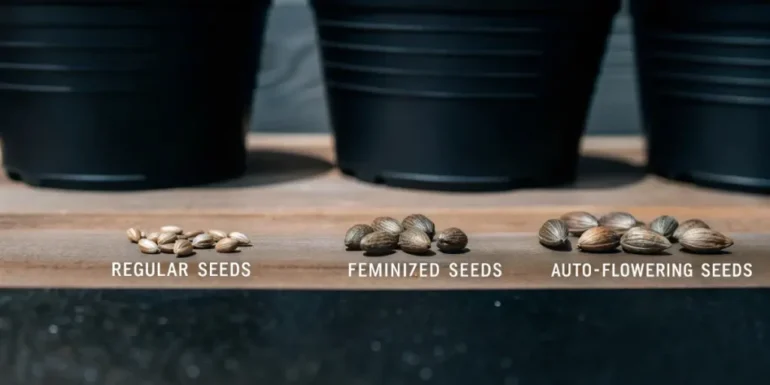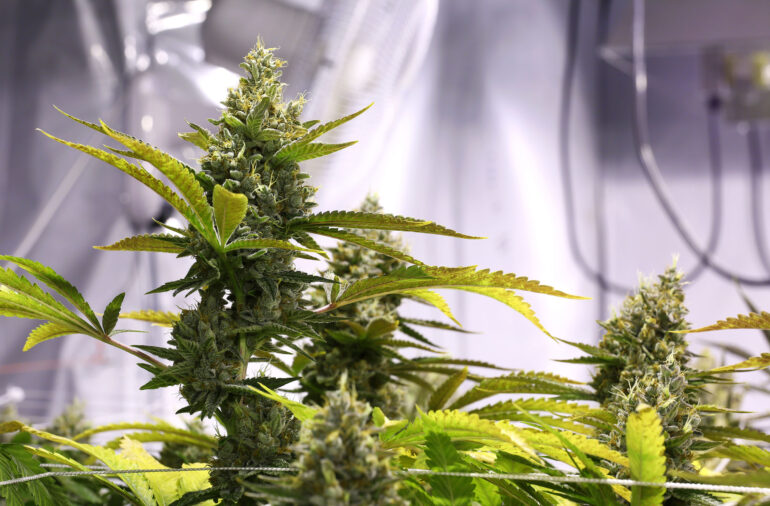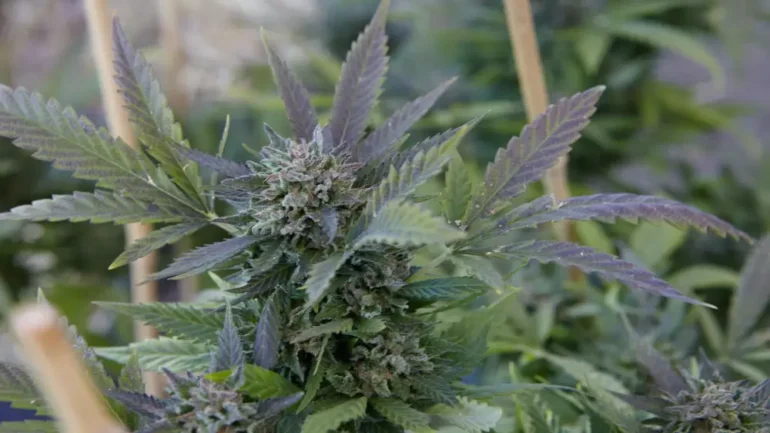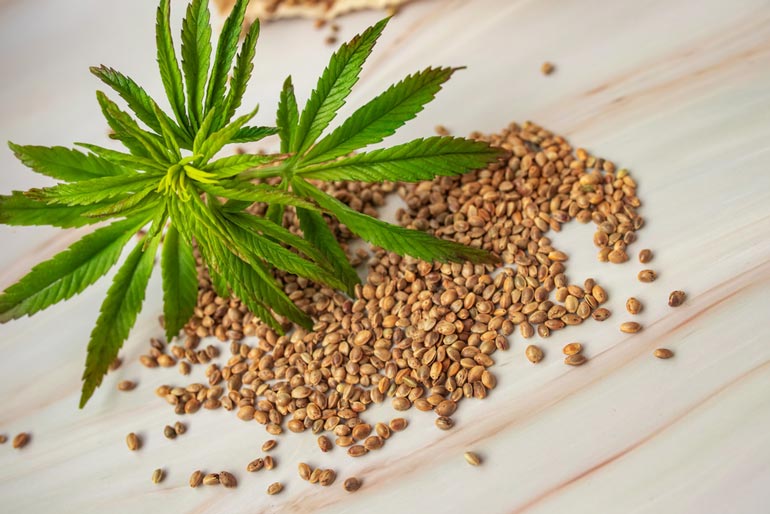Planting cannabis successfully starts long before the first seed touches soil, with choices that shape how your grow will look and perform.
The choice of seed—its genetics, type, and quality—shapes nearly every aspect of your grow: height, yield, resistance to pests, flowering speed, and end potency.
In this guide, we’ll walk you through how to pick the seeds best suited for your unique setup, climate, and experience. By the end, you’ll have written criteria in mind rather than picking at random.
Understanding the Basics: Seed Types and Why They Matter

Before zeroing in on specific strains or nurseries, it’s important to understand the three main types of cannabis seeds and the advantages or trade-offs of each:
- Regular seeds: These produce both male and female plants. They’re useful to breeders or purists, but for most growers, this means extra work—weeding out males or risking pollination.
- Feminized seeds: Engineered to produce only female plants, which are the ones that flower with resinous buds. Most home growers favor feminized seeds to avoid male plants wasting space or damaging harvests.
- Autoflowering seeds: These switch from vegetative to flowering stage based on age rather than light cycles. They often mature faster and are more forgiving of light schedule mistakes.
Because feminized and autoflowering genetics simplify decision-making, especially for beginners, they’re frequently recommended. But your choice must align with your grow environment, patience level, and goals.
Matching Seeds to Your Growing Environment
Your environment—whether a climate-controlled indoor tent or a sunlit backyard—dictates almost everything else about which seed to choose.
1) Indoor Conditions and Constraints

When growing inside, you control temperature, humidity, and light—but you may be constrained by space. Look for strains that stay compact or easily manageable under training methods (e.g., topping, LST). You’ll especially benefit from:
- Short, bushy genetics
- Strains known for even growth (less stretch during flowering)
- Autoflowering or fast-finishing types to reduce total grow time
- Good seed bank documentation on indoor performance
Also consider how powerful your lighting is. Some plants require high-intensity LED or HPS lights to fully express their potential. If your light setup is modest, choosing seeds bred for medium-light tolerances is wise.
2) Outdoor Environments: Climate, Season, and Hardiness

Outdoor growing introduces variables: sunlight intensity, rainfall, pests, and temperature swings. In many regions, the window for safe outdoor cultivation is limited by frost or the monsoon season. Thus, important seed traits outdoors include:
| Factor | Seed Trait to Favor | Why It Matters |
| Climate stress (heat, cold, humidity) | Robust genetics, disease resistance | Helps plants survive weather extremes |
| Growing season length | Early-to-mid finishing | Prevents buds from rotting before harvest |
| Pest resistance | Strong resin coating, resilient stems | Thicker cuticles reduce insect damage |
| Sunlight exposure | Strains that thrive under full sun | Some strains suffer under intense UV or shadowing |
Seeds marketed as “outdoor” often carry extra robustness. For example, many breeders recommend using autoflowering cannabis varieties outdoors, especially for beginners, because their predictable lifecycle mitigates many risks.
Did you know? Outdoor-grown cannabis sometimes yields larger but less dense buds compared to indoor grows, due to environmental stresses.
Evaluating Genetics and Seed Bank Reputation
Even the perfect-looking seed is only as good as its genetics and the company that bred or sold it.
1. Genetic stability
Seeds should come from stable, well-bred lines. Unstable lines can produce plants with wildly varying traits (stretch, height, yield).
2. Germination guarantee
Trustworthy seed banks often offer a guarantee, replacing seeds that fail to sprout under proper conditions. For example, Royal King Seeds offers a 90% germination guarantee when using their recommended germination guidance and process. Check their catalog: royalkingseeds.com. Their strain pages tend to include clear breakdowns of indoor vs outdoor suitability, expected flowering times, and customer ratings – helpful tools when comparing options side by side.
3. Customer reviews and real growth feedback
Forums, grower communities, and seed-bank review sites can validate or disprove promotional claims.
4. Transparency and data
A dependable breeder provides photos, growth timelines, indoor vs outdoor data, and information about aroma, THC/CBD levels, and expected height.
Narrowing Your Strain Choices: Strategy Over Impulse
Once you’ve filtered for seed type, environment, and seed bank quality, you still have dozens of strains left. Here’s how to narrow it further:
- Sativa vs Indica vs Hybrid: Sativas often grow tall and stretch more; Indicas tend to be more compact. Hybrids can blend desired traits. If your vertical space is limited, leaning toward indica-dominant or hybrid strains is generally safer.
- Flowering length: If your climate or indoor schedule demands speed, favor strains with shorter flowering periods (6–8 weeks rather than 10+). Autoflowers shine here.
- Yield goals: Some strains are high-yielding at the cost of more maintenance. If you’re focused on ease and predictability over extreme yield, pick a strain with moderate but consistent output.
- Aroma, flavor, effects: Your preferences will tether you to specific terpene profiles (citrus, earthy, pine) or cannabinoid ratios (high-THC, CBD-rich, balanced). Ensure your strain matches both your grow ability and desired end effect.
Germination and Early Growth: Bringing Your Seed to Life
Selecting a seed is only half the battle. Even optimal genetics fail if germination or early-stage care is poor.
- Proper germination protocols (e.g., paper towel method, starter plugs) should follow guidelines from your seed bank.
- Slow and stable conditions win at this stage: moderate warmth, gentle moisture, and minimal disturbance.
- Once sprouted, gradual light introduction (not sudden intense exposure) helps seedlings settle in without shock.
If 4 out of 5 or 9 out of 10 seeds from your order don’t sprout (per the terms from your chosen seed bank), request replacements. That’s precisely why those germination guarantees exist.
Adjusting Strategy Mid-Season (Outdoors vs Indoors)
Sometimes conditions change or surprises pop up mid-season. Here’s how to tweak:
- Indoor growers might need to switch to low-stretch training or prune lower growth as plants get too tall.
- Outdoor growers may adopt more staking, trellising, or even interplanting to maximize light capture.
For both, adjusting nutrient delivery, watering schedule, and pest controls in response to plant behavior is key. A genetic “luxury” trait (e.g., resistance to mold) may save your harvest in a rainy stretch.
Final Thoughts and Checklist

Choosing the right cannabis seed is part art, part science. But by layering in strategic filters—seed type, environment fit, breeder quality, strain traits—you transform chaos into deliberate selection. Use this quick checklist before placing any order:
- Confirm type (feminized, autoflower, regular)
- Compare indoor vs outdoor suitability
- Inspect seed bank reviews, guarantees, and transparency
- Match the flowering time and yield to your setup
- Ensure compatibility with your preferred effects/aromas
Growers who take care with selection often find themselves weeks ahead in avoiding problems and maximizing harvest quality. Start with solid seeds, support them well, and your first grow will repay that planning many times over.
